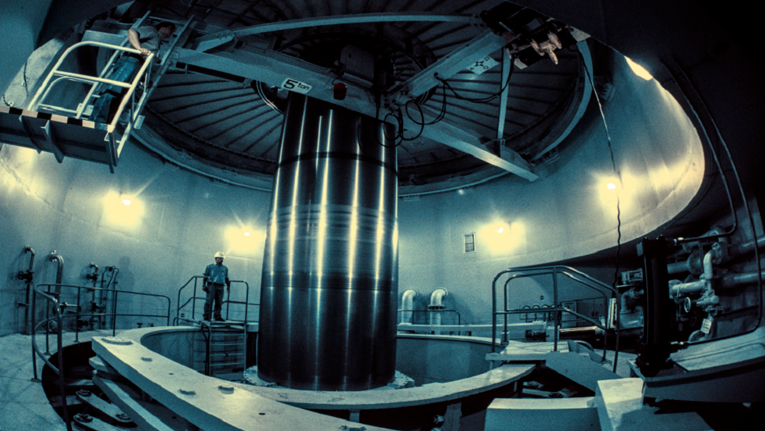
A groundbreaking tool has been developed by scientists at the Lawrence Livermore National Laboratory in California to simulate the use of a nuclear device for altering the trajectory of hazardous asteroids and preventing collisions with Earth. Detailed in the Planetary Science Journal, this innovative study introduces a method for modeling the energy dispersion resulting from a nuclear device on an asteroid’s surface. In a pioneering achievement, the researchers at LLNL successfully initiated a fusion reaction that produced more energy than it consumed, a process referred to as “ignition.”
The intention is to use this model to build upon insights gained from NASA’s Double Asteroid Redirection Test (DART) mission, where a spacecraft was deliberately crashed into an asteroid to modify its trajectory. As limitations exist on the mass that can be lifted into space, scientists are exploring nuclear deflection as a practical alternative for kinetic impactor missions. While the probability of a significant asteroid impact in our lifetime is low, the potential consequences could be devastating.
Megan Bruck Syal, a physicist at Lawrence Livermore National Laboratory (LLNL), emphasized, “Despite the low probability of a major asteroid impact in our lifetime, the potential consequences could be devastating.”
Due to the higher energy density per unit mass of nuclear devices, these technologies are deemed invaluable in mitigating asteroid threats. The LLNL team stated in their research paper, “In the event of a true planetary defense emergency, decisions regarding the launch of reconnaissance and/or deflection missions must be informed by state-of-the-art modeling and simulation capabilities.”
Such simulations also require extremely high speeds to develop countermeasures rapidly. Physicist Mary Burke from Lawrence Livermore National Laboratory explained, “If we have enough warning time, we might launch a nuclear device and send it millions of miles to an asteroid on a collision course with Earth. We would then detonate the device, either leading to neutralizing the asteroid and keeping it intact but providing a controlled push away from Earth, or we could shatter the asteroid into small, fast-moving fragments that would avoid impacting Earth as well.”
Scientists assert that predicting the effectiveness of asteroid deflection through nuclear explosions requires advanced simulation processes involving various theories in physics.
The team concluded, “The relevant physics in these simulation operations spans several orders of magnitude in terms of scale and requires a variety of different, complex physics packages, and they are computationally expensive.”
The new model developed by the Lawrence Livermore National Laboratory covers a broad range of physical factors, making the simulation complex and computationally demanding. This comprehensive approach makes the model applicable to a wide range of potential asteroid scenarios in case of a genuine emergency.
Leave a Reply